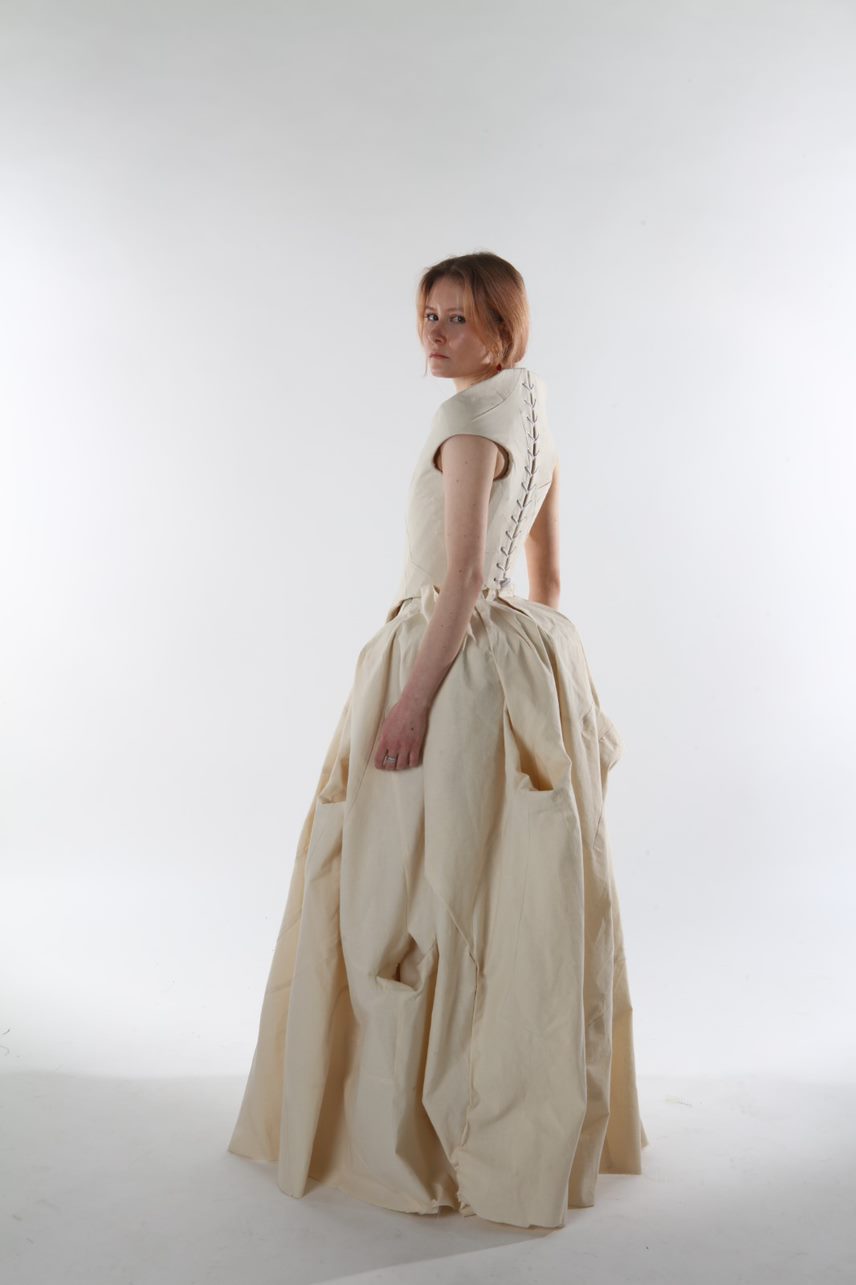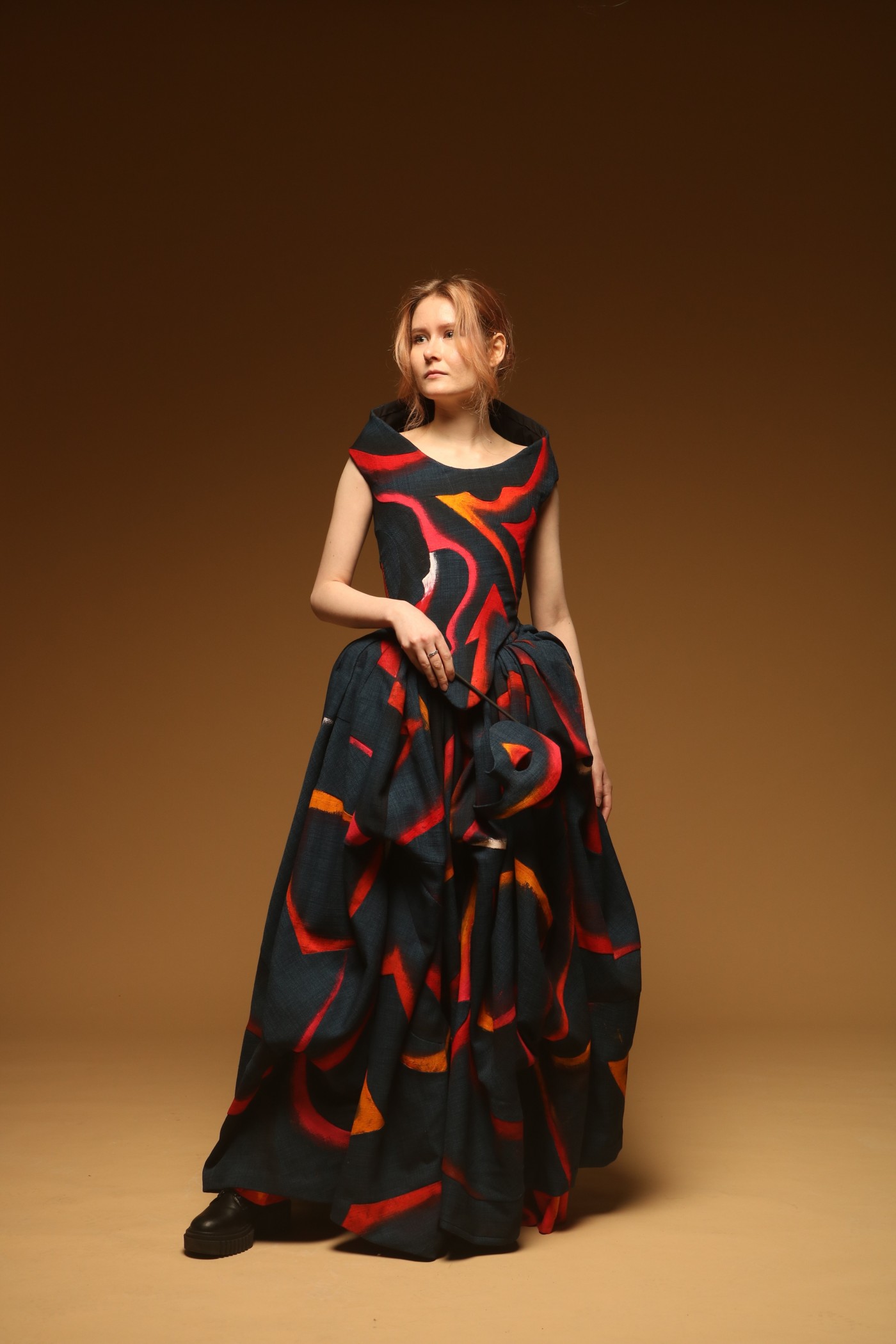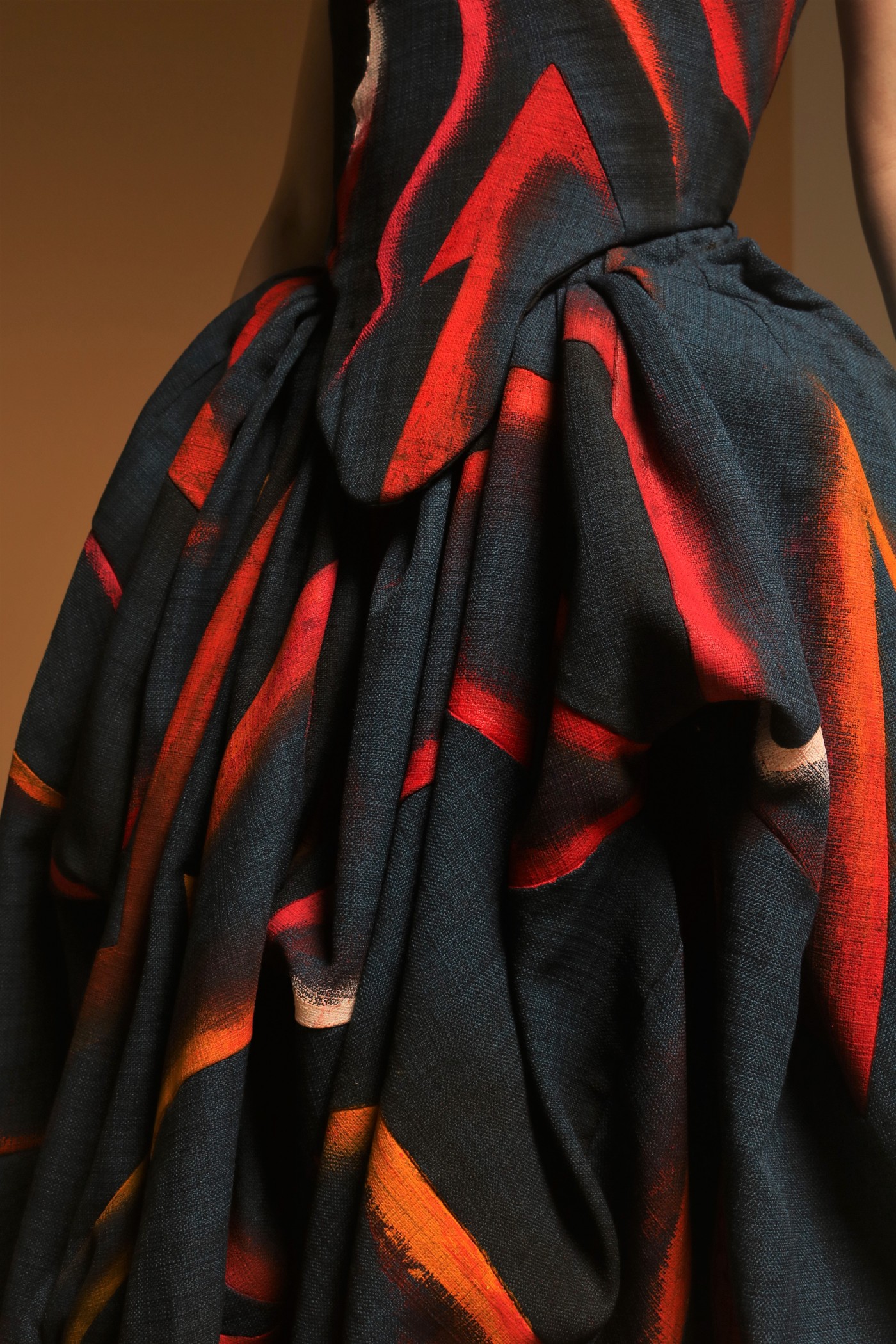- youtube
- bluesky
- Home
- About
- Costume Journal
- Membership
- Conference & Events
- Grants & Awards
- News & Social
In this week's blog post, we hear from Clara Tenflede, winner of the Costume Society Patterns for Performance Award 2023. Clara talks us through the process and experience of creating her winning costume, designed for the 17th century Restoration comedy The Rover.
The creation of a historically accurate costume is as thrilling as it is fulfilling. At times, however, historical accuracy might be approached more liberally. When a theatre or film production is likely to benefit from creative changes, the concept of “authenticity” might be considered. A thus modified historical costume might produce an “impression of the past” while acknowledging the viewers’ contemporary background. My entry for the Patterns for Performance 2023 competition, which I designed and made during my final year at UAL Wimbledon College of Arts, aimed to exemplify this approach. My creative vision was to build a bridge between the past and the present through well-informed design choices and to increase the audience’s relatability to a particular character while respecting the historical parameters of the period.
I set out to create a dress for Hellena in Aphra Behn’s late 17th century Restoration comedy The Rover. I imagined a life-affirming, colourful scenario demonstrating Hellena’s strong femininity within the Italian carnival setting of the play. My goal was to highlight Hellena’s hunger for life and her determination to liberate herself from her predetermined future awaiting her in the convent. I challenged myself by incorporating two performative transformations. These allow for the costume to swiftly adapt to different stages of Hellena’s emancipation during her night at the carnival. Furthermore, I added a layer of timeless symbolism in order to faithfully mirror the play’s theatricality as well as Hellena’s rebellion and her breaking free.
The comedy The Rover was written and set in the Interregnum period (1649 to 1660). I decided to base Hellena’s dress on Janet Arnold’s historical pattern from the 1660s, hence anchoring the costume in the period it belongs and in which it was initially performed. My conceptual ideas very much challenged my love for historical accuracy and detail. This made me wonder how far I should move away from Janet Arnold’s pattern to achieve my goal? How could the transformations be integrated in an organic and elegant way?
I started out by researching the pattern I had chosen. I wished to retain certain defining markers of the period in question – most notably the sloping off-the-shoulder neckline and the elongated bodice at the front. In order to contemporise the design I chose a more dramatic, raised back neckline and I decided against the white blouse-like sleeves, baring her arms.
I focused on creative pattern cutting inspired by the Japanese drop hole, or otoshiana technique. This makes it possible to integrate the two performative transformations through the use of sleeves. The sleeves are hidden in the petticoat and can be reached for by the performer and put on without any help or the need to go off-stage. The sleeves are attached upwards to the waistline inside of the skirt with the help of magnets. This creates intriguing drapes within the skirt prior to the performer initiating a transformation. For the first transformation, the performer can reach down and slide one arm in a sleeve to bring the skirt up at the performer’s side and to reveal a fiery-red underskirt. This asymmetrical transformation serves as Hellena’s carnival costume. It brings out her confidence and her lively and flirtatious side. To achieve the second transformation the performer can use a set of two sleeves along the back of the skirt. When pulled up, the modestly coloured dusty blue fabric frames Hellena’s front. This creates the illusion of a nun’s habit, alluding to the path Hellena’s father and brothers had determined for her. It may also be used as a hooded cape which makes it easier for Hellena to secretly sneak out of her house to go to the carnival. Creating these transformations involved an elaborate creative pattern cutting process as well as precise calculations and spatial considerations. There are 12 panels in the bodice cover and 51 separate panels within the skirt that connect the integrated sleeves to each other. This process really kept me on my toes until the very last minute when the 3-D completion of the toile showed that the transformations and the movement of the dress actually worked the way I had envisioned.
The idea that Hellena’s true self is awaiting its liberation is supported by the symbolic use of colour which can be intuitively understood by the audience: orange-red, lava-like streaks are blooming through the cracks of a darker, blue-coloured, seemingly rocky surface. The creatively cut pattern of the bodice cover and the skirt accentuate the illusion of the metaphoric cracks where brightly-coloured paint is applied rather casually along the seamlines all over the costume, resembling brushstrokes on canvas. The canvas in Hellena’s dress is the aforementioned blue-coloured, slightly textured fabric. Expressionist artworks of the early 20th century and their bold colours and generous brushwork inspired my play with contrasts between dark and light as well as cool and warm colours. By the way, the blue base fabric of the costume is leftover fabric of the Games of Thrones production. It was donated to the college for student projects and helped me to enhance the sustainability of the costume I created.
Designing and completing my Patterns for Performance entry has taught me a lot on many different levels. I have not only acquired solid knowledge and practical skills, but also found a new level of creative courage. The competition provides a wonderful opportunity to grow as a young designer and costume maker. I am very grateful that the Costume Society UK has given me the opportunity to participate in the competition.
To learn more about the Costume Society's Awards, visit our website.
Image gallery


